Yes, It's Named for a Woman
What's in a Name? It is often an honor to name discoveries and inventions after the individuals involved. Too often the accomplishments of women in science, technology, engineering, and math go unnoticed or unremembered. But many women have been remembered and this page notes some of their eponymous contributions. It's just a small sample of the multitude of women whose name has been attached to symbols that demonstrate their involvement and their worth.
After viewing the image of the special object on the front, point at the card to see the image of the woman who has given her name to the significant object on the back.

USS Hopper (DDG 70)
"Dare and Do"
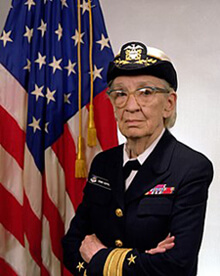
Rear Admiral
Grace Hopper
- Amazing Grace Hopper -

USS Hopper (DDG-70)
The United States Navy Arleigh Burke-class guided-missile destroyer is named for the pioneering computer scientist Rear Admiral Grace Hopper. The ship was built in Bath, Maine, and was christened in January 1996.
An early computer pioneer, Grace Hopper joined the Navy Reserves during World War II. She worked on the UNIVAC computer and developed the first operational compiler. In 1967, she was recalled-by the Navy where she rose in rank.- Due to the wide range of Rear Admiral Hopper's accomplishments and her rank, she is sometimes called "Amazing Grace".
The " Grace Hopper Celebration of Women In Computing " is an annual conference for women in computing, and the "Grace Murray Hopper Award" is given to women (age 35+) who have made outstanding contributions in the computer science field.
- - learn more at Astra's

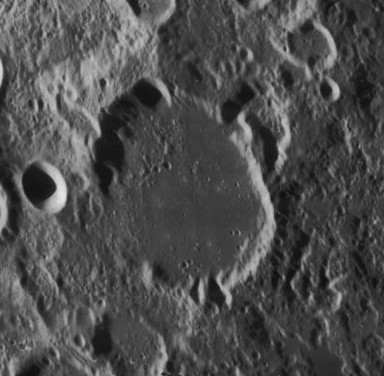
Lunar Crater
- Cannon -

Annie Jump Cannon
- Spectral Astronomer -

Cannon Crater
Cannon crater is 57 km in diameter, located on the Moon at 19.9N, 81.4E. Near Mare Marginis, it may be seen on the terminator of the 6-day old moon. This image was taken by Lunar Orbiter 4.
Annie Cannon studied the spectrum of stars at the Harvard College Observatory. During her examination of 400,000 stellar spectra, Annie developed a system for spectral classification that is still used by astronomers today.
The Annie Jump Cannon Award is given by the American Astronomical Society to a North American female astronomer within five years of earning her PhD in the year designated for the award.
- - learn more

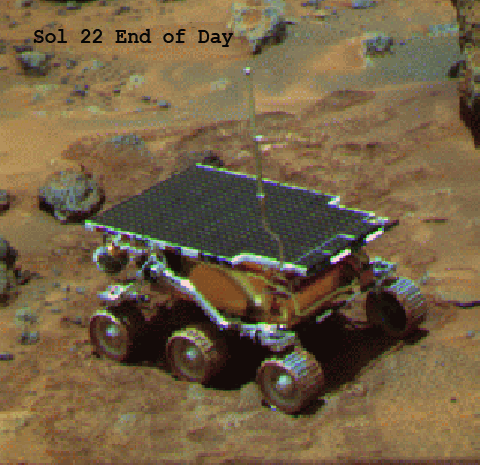
Mars Rover
- Sojourner -
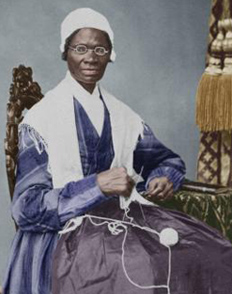
Sojourner Truth
- Woman's Rights Advocate -

Sojourner Rover
Launched from Earth on December 4, 1996, Sojourner Mars rover was the first rover to be successfully landed on Mars. Sojourner's mission was to explore the Martian terrain for 7 days. It sent back 550 images and made scientific measurements including chemical analyses of rocks and soil and data on winds and other weather factors. The rover's mission lasted 83 days until its final data transmission was received on September 27, 1997.
Sojourner Truth was a freed slave who journeyed across the northern states from New York to Michigan. Preaching about Jesus, she walked through the north like a disciple--with nothing in her hands and dependent on the graciousness of others. She supported abolition, temperance, and women's rights.

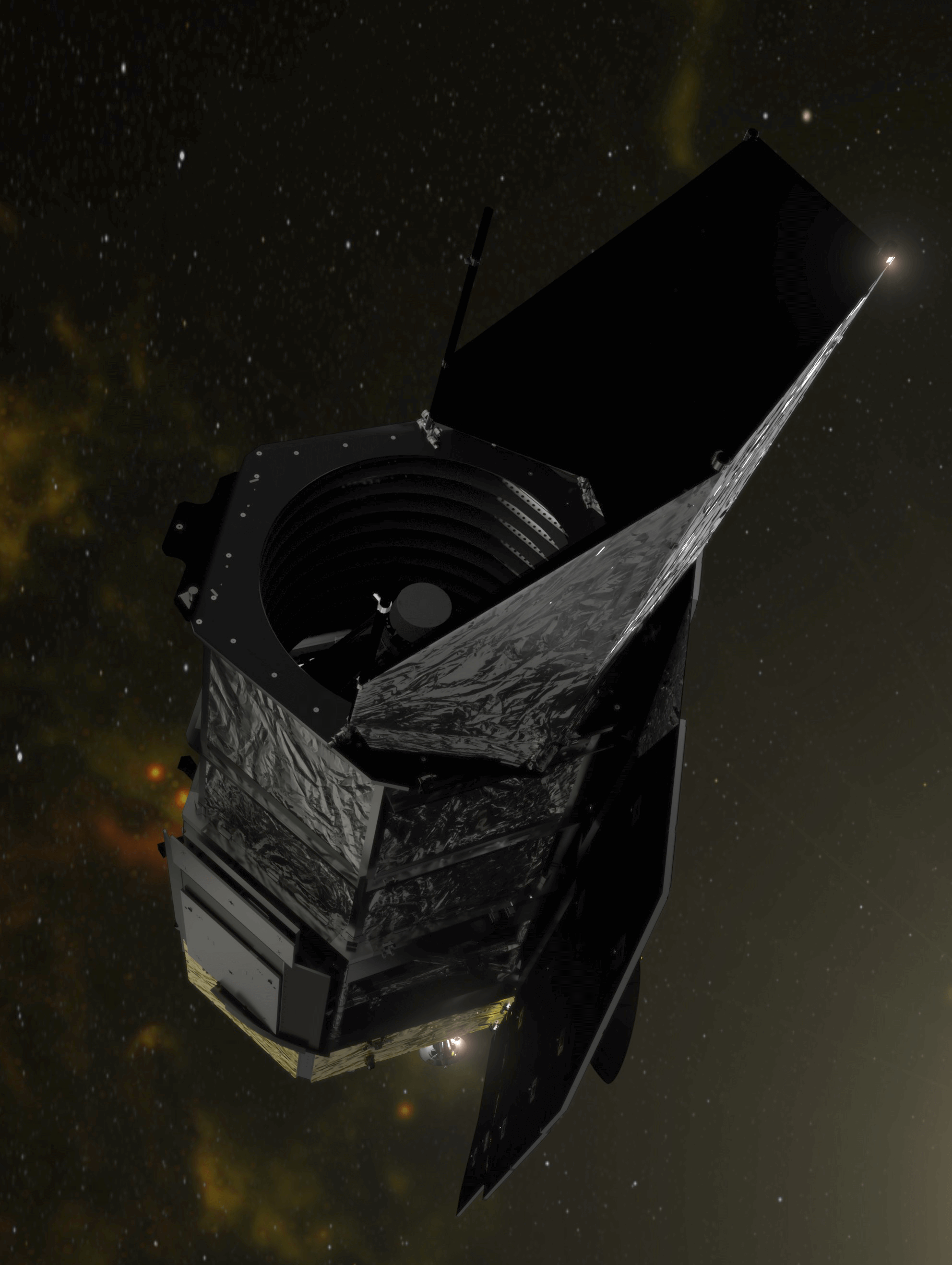
Nancy Grace Roman
- telescope -
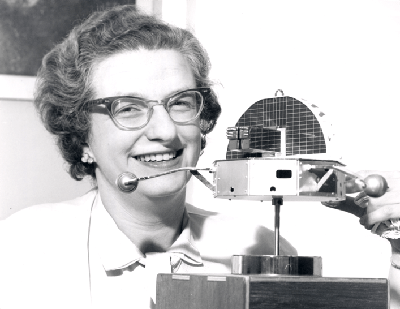
Nancy Grace Roman
- Mother of the Hubble Space Telescope -

Nancy Grace Roman Telescope
NASA renamed the Wide Field Infrared Survey Telescope (WFIRST) in honor of Nancy Grace Roman in May of 2020. It will be an orbiting observatory designed to work on dark energy and exoplanets. The primary mirror is to be 7.9 feet (2.4m) in diameter. Two instruments are planned: A Wide Field Instrument and a complex stellar Coronagraph to study nearby exoplanets.
Known as the "Mother of Hubble", Nancy Grace Roman was hired by NASA in 1959 to help set up the Office of Space Science. In 1960, she was made the Chief of Astronomy, the first woman to hold an executive position at NASA. Nancy was instrumental in developing the agency’s many space telescopes.
Nancy worked at Yerkes Observatory and the U.S. Naval Research Laboratory and worked in radio astronomy before working on the NASA space program.
- - learn more

What's in a Name?
What's in a name, anyway? According to William Shakespeare, a rose by any other name would smell as sweet. By naming comets, asteroid, lunar craters, etc., after individuals, we honor people who have achieved great or difficult things. Astra presents a Name Cloud, with numerous oversights to be sure. Lately I have discovered that an author I respect greatly, who is, Anne McCaffrey was honored by the naming of a ridge on Charon (the large moon of Pluto) McCaffrey Dorsum. So here below is a Name cloud, representing women with a focus on astronomy.
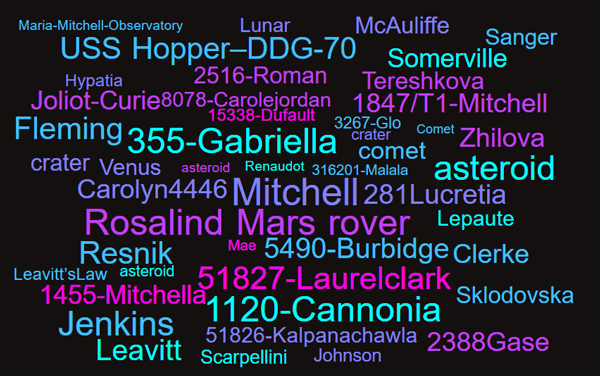
How many do you recognize? It can't include everyone, but we expect that the cloud will change from time to time.
Please feel free to point others to this URL. Images on this page are in the public domain in the U.S.A. The text on this page is copyrighted, ©2020, by the author, Dawn Jenkins, and is NOT released into the public domain. It should not be copied to another site without permission or otherwise published without contacting and crediting the author. Please read the copyright statement linked below. For more information and other permissions use Astra's Contact Page

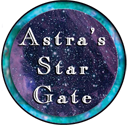
 Return to Astra Stargate home!
Return to Astra Stargate home!